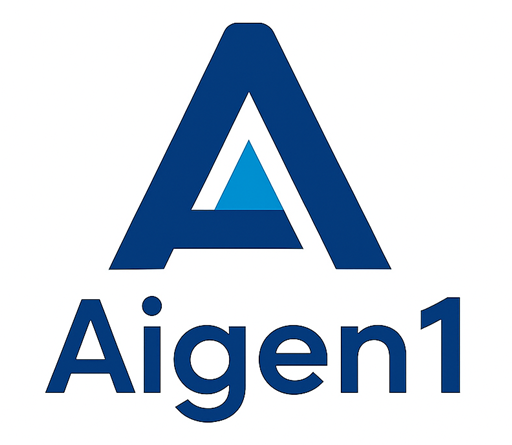The semiconductor industry is the backbone of the global digital economy, powering everything from smartphones and laptops to cars and artificial intelligence, and in 2025, understanding the semiconductor industry trends, growth, and the future has never been more important. This trillion-dollar industry is at the heart of technological transformation, with rising demand for faster chips, smarter devices, and sustainable manufacturing.
![]()
This article explains the Semiconductor Industry 2025 in detail: market growth drivers, key trends, challenges, and innovations shaping its future.
What Are Semiconductors?
A semiconductor is a material with electrical conductivity between a conductor (like copper) and an insulator (like glass). Silicon is the most widely used semiconductor, forming the basis of modern chips.
Semiconductors are essential for:
- Microprocessors & chips (smartphones, computers)
- Automotive systems (electric vehicles, autonomous driving)
- Artificial Intelligence (AI accelerators, GPUs, neural processors)
- 5G & 6G networks
- IoT devices and smart home technology
The Semiconductor Market in 2025
According to industry reports, the global semiconductor market in 2025 is projected to cross $600–650 billion. Growth is fueled by:
- Artificial Intelligence (AI) and machine learning integration.
- Electrification of vehicles and demand for automotive chips.
- Data centers and cloud computing expansion.
- Consumer electronics with smaller, more efficient chips.
- Asia-Pacific (led by Taiwan, South Korea, and China) remains the semiconductor hub, while the U.S. and Europe push for local manufacturing to reduce reliance on imports.
Key Trends Driving the Semiconductor Industry in 2025
1. Smaller Process Nodes (5nm → 3nm → 2nm)
- Transition from 5nm chips to 3nm and 2nm nodes. Chip Technology 2025: 5nm vs 3nm vs 2nm Explained
- Smaller nodes mean higher performance and lower power usage.
- TSMC, Samsung, and Intel are leading this innovation.
2. AI-Powered Chips
- AI accelerators are integrated into CPUs and GPUs.
- Specialized Neural Processing Units (NPUs) are now common in laptops and smartphones.
- AI semiconductors are critical for autonomous vehicles, robotics, and big data analytics.
3. Automotive Semiconductors
- Electric vehicles (EVs) require 2–3x more chips than traditional cars.
- Growth in ADAS (Advanced Driver Assistance Systems) and self-driving technologies.
- Automotive chips could account for 20% of the semiconductor market by 2030.
4. Geopolitical Shifts & Supply Chain Resilience
- U.S. and Europe are investing billions under the CHIPS Act to strengthen domestic production.
- Supply chain diversification is critical after shortages during the pandemic.
5. Sustainable Manufacturing
- Chip fabrication plants (fabs) consume large amounts of water and energy.
- 2025 focus: eco-friendly processes, recycling water, and lowering emissions.
Growth Opportunities in 2025
- 5G and Beyond → Demand for RF semiconductors for faster networks.
- Artificial Intelligence → AI-focused chips in smartphones, data centers, and IoT.
- Healthcare → Wearable devices, medical imaging, and smart implants.
- Quantum Computing → Semiconductors paving the way for quantum processors.
- Space & Defense → Satellites and defense electronics driving specialized chip demand.
Challenges Facing the Semiconductor Industry
High Manufacturing Costs
- Building a new fab can cost over $20 billion.
- Only a few players (TSMC, Samsung, Intel) can afford cutting-edge nodes.
Supply Chain Risks
- Heavy reliance on Taiwan and South Korea for advanced chips.
- Geopolitical tensions could disrupt supply.
Talent Shortage
- Demand for engineers, AI experts, and semiconductor specialists exceeds supply. Top Programming and Software Skills to Learn in 2025
Rising Complexity
- As nodes shrink, design and manufacturing challenges increase.
Future of the Semiconductor Industry Beyond 2025
- 2nm and 1.4nm Chips → Expected by 2026–2028, revolutionizing performance.
- 3D Chip Stacking → Increases density and reduces power consumption.
- AI-Designed Chips → Using machine learning to optimize chip architecture.
- Expansion into New Materials → Beyond silicon: graphene, gallium nitride (GaN), and silicon carbide (SiC).
- Globalization vs. Regionalization → Balance between global cooperation and local independence in chip supply chains.
Semiconductor Industry Leaders in 2025
- TSMC → Still leading in advanced chip production (3nm & 2nm).
- Samsung Electronics → Strong in memory chips and logic chips.
- Intel → Investing heavily in catching up with TSMC and Samsung.
- NVIDIA, AMD, Qualcomm, Apple → Designing next-gen processors.
- ASML → Exclusive supplier of EUV lithography machines critical for advanced nodes.
FAQs
- Q1: How big is the semiconductor industry in 2025?
The market is projected to exceed $600 billion, driven by AI, EVs, and consumer electronics. - Q2: What is the biggest trend in semiconductors in 2025?
The move towards 3nm and 2nm chips and the rise of AI-focused processors. - Q3: Who are the top semiconductor companies in 2025?
TSMC, Samsung, Intel, NVIDIA, AMD, Qualcomm, and Apple dominate the market. - Q4: What is the future of semiconductors beyond 2025?
Expect breakthroughs in 2nm, 1.4nm nodes, quantum chips, and 3D stacking.
Conclusion
The Semiconductor Industry in 2025 is experiencing rapid transformation. With growth driven by AI, 5G, EVs, and advanced chip designs, semiconductors are more critical than ever. While challenges like supply chain risks and high costs remain, opportunities in next-gen computing and sustainable manufacturing promise a bright future.
From 5nm to 2nm chips, from AI accelerators to quantum processors, semiconductors will continue powering the digital revolution well beyond 2025.


